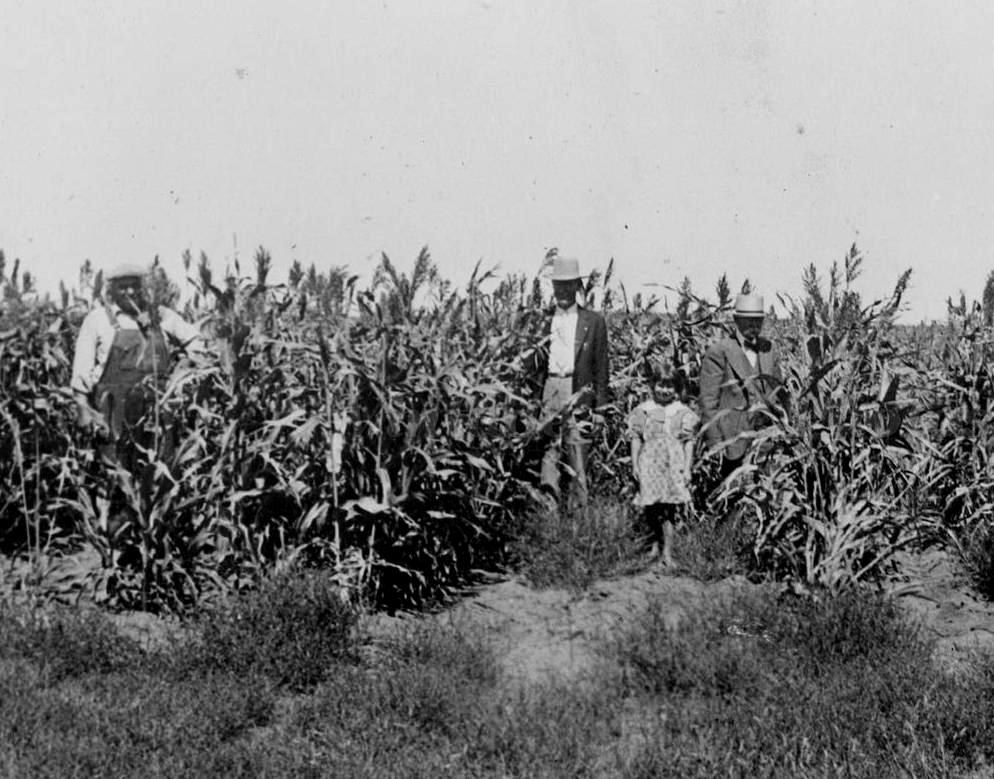
The New Deal: Goverment Role--Federal Departments

Figure 1.--Of all Federal agencies more attention was given to the Department of Agriculture than andother depatrment. One of the most popular New Deal figures was Agriculture Secretary Henery A. Wallce, although not with the Democratic Party estsblishmet. He work tirelessly to improve American farming through improved methods, new crops, hybreed seeds, research, and a range of innovative programs. Here we see some of the drough-resustant crops being used to address the Dust Bowl in South Dakota. The press caption read, "Beat the Drought by Anticipating It: South Dakota farmers and cattlemen who took the advice of farm experts last Springh when they predicted a shoirtahe of rain for 1934 are safely weathering the drought. The above photo shows the growth of two drought-resistant cattle feed crops on the C.S. Betts farm near Huron, S.D. In the foreground is part od the pasture of Russian thisdtle. Behind it is a srtabnd of amber cane [a type of sorghum] that yields a tin and a hakf of silage to the ascre."
|
|
President Roosevelt's New Deal not only created a lot of new agencies to deal ith the Depression ctisis, but expaned funding for existing programs. These agencies had existying programs in place that were used to fight the Depression. Of all Federal agencies more attention was given to the Department of Agriculture than andother depatrment. One of the most popular New Deal figures was Agriculture Secretary Henery A. Wallce, although not with the Democratic Party estsblishmet. He work tirelessly to improve American farming through improved methods, new crops, hybreed seeds, research, and a ange of innivaive programs. His major gioal was to rise farm prices. He was the most outspolen liberal in the cabinet. It is not accident that President Roosevelt chose him as his 1940 running mate. It is stateling that a Secretary of Agriculrur becameso favoravlt disposed toward the Soviet Unio which presided over the greatest agricultural failure in human history. Many of the new Federal agenies were established or became part of the Department of Agriculture. County extension offices offered services to farmer around the country. Here both Federal and state efforts were combined. This included research on crops and farming methods cinducted at Land Grand cilleges and insitutions. This provided farmers a great deal of valuable informtion on crops, methods, soil coservstion, and topics of interest. Preventing another Dust Bowl was a high priority for the New Deal. Soil conservatiion was so important in preventing another Dust Bowl that a new Soil Conservatiion Service was established within the USDA (1938). The New Deal did not solve the American farm problem. This was primarily a matter of over production. Americn farmers were too good for theor own good. The New Deal did, however, solve the Dust Bowl. It has been almost a century now and there has been no repeat of the Dust Bowl, lage becuse of the soil conservtion masures dopted by Americn frmrs bginning with he New Deal. Also important to the New Deal was the Department of Labor. We do not see as many new programs and agencs in Labor, mpre Americans were affected by Labor reform than the agricultural programs. .
CIH

Navigate the Children in History Website:
[Return to Main New Deal: Government role pge]
[Return to Main New Deal page]
[Introduction]
[Animals]
[Biographies]
[Chronology]
[Climatology]
[Clothing]
[Disease and Health]
[Economics]
[Ethnicity]
[Geography]
[History]
[Human Nature]
[Law]
[Nationalism]
[Presidents]
[Religion]
[Royalty]
[Science]
[Social Class]
[Bibliographies]
[Contributions]
[FAQs]
[Glossaries]
[Images]
[Links]
[Registration]
[Tools]
[Children in History Home]
Created: 7:36 AM 5/21/2018
Last updated: 7:36 AM 5/21/2018



